─ The Day I Almost Cried During Wisdom Tooth Extraction ─
📖 Reading Time: ~10 minutes
■Who This Blog Is For
- Anyone about to have a wisdom tooth removed and feeling anxious
- Those considering dental implants but still hesitating
- People torn between “partial dentures,” “implants,” or “leaving things as they are”
- Readers in their 50s who want to know a real-life treatment story
Talking with the Dentist Before Extraction
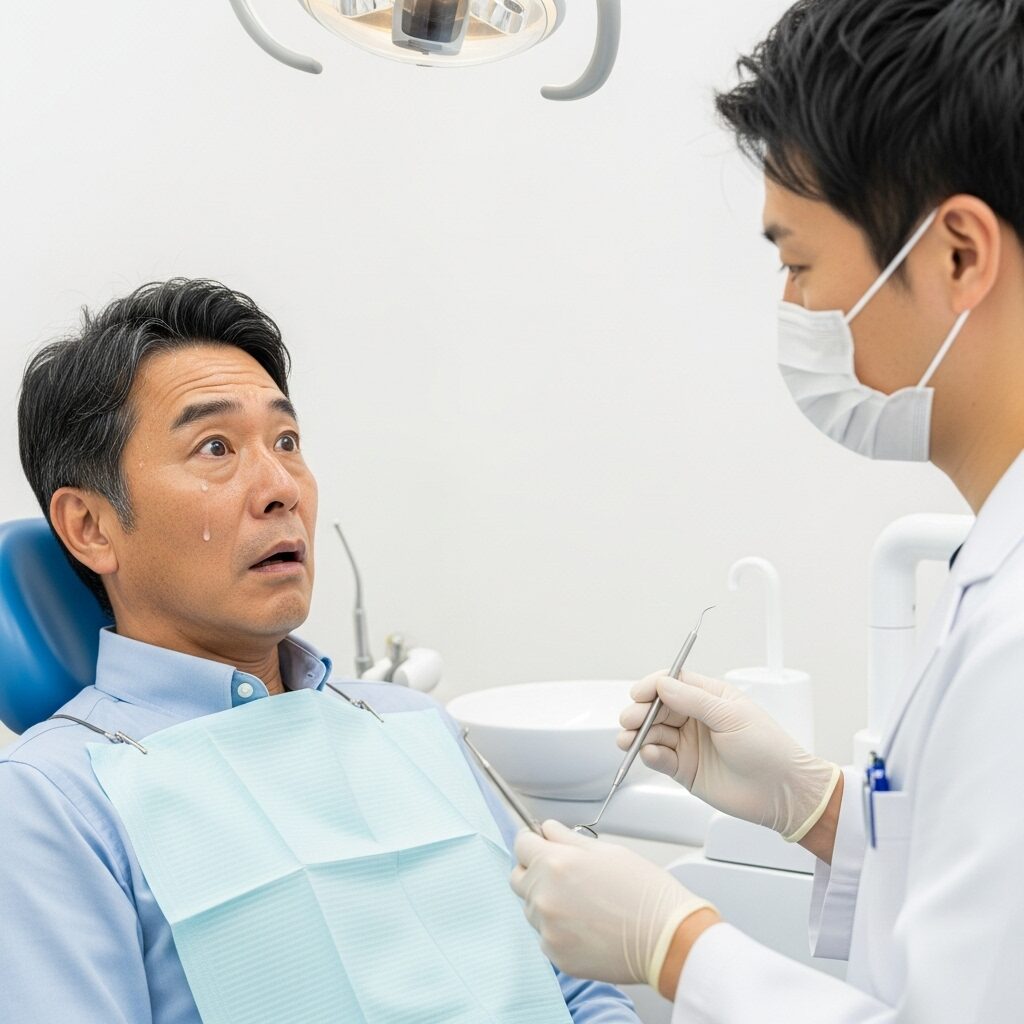
On the day of the extraction, I asked my dentist:
“I’m thinking of getting an implant for my first molar, but which tooth should I extract first?”
In my head, the plan was simple:
“Remove the first molar → One implant solves the problem.”
But the dentist’s answer was unexpected:
“Since periodontal disease has spread to your second molar as well, if you want an implant, you’ll need to remove two teeth. But first, it’s better to take out your wisdom tooth.”
…Wait, two teeth!?
I had only prepared myself for one.
And to start with the wisdom tooth—the dreaded one that’s hard to pull out?
Inside my head, I was screaming:
“No wayyy (tears)!”
Honestly, I wasn’t just afraid of the pain.
I was terrified of the cost.
My wallet was crying louder than my heart.
Chicken Old Man on the Chopping Board
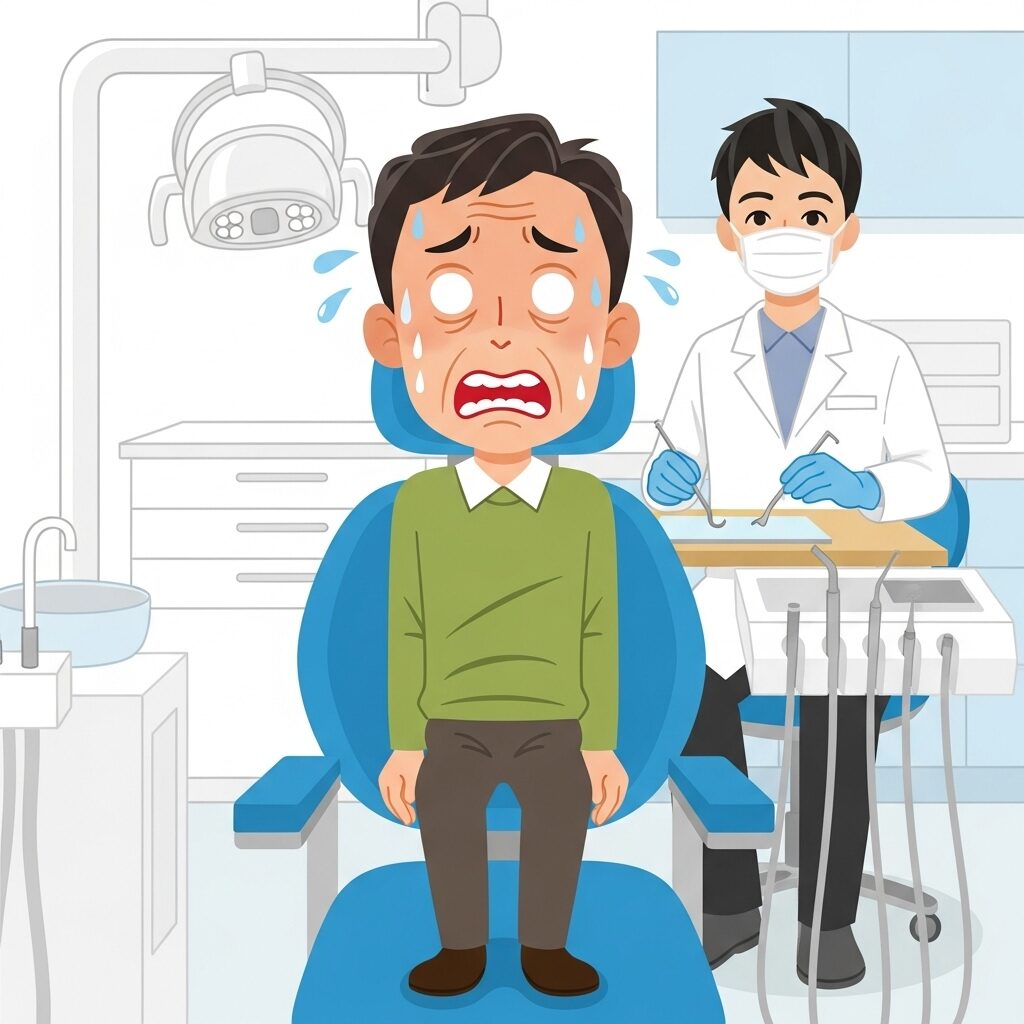
Wisdom teeth = legendary pain.
I felt like a helpless fish on the chopping board.
- My heart was pounding.
- My hands were sweaty.
- My lips were trembling, even though I kept silent.
Tears almost slipped out… I was a total chicken old man.
To be honest, what scared me the most wasn’t the pain itself.
It was the sound of the instruments and the fear of “when will I hear that cracking sound?”
The Truth About Anesthesia and Extraction
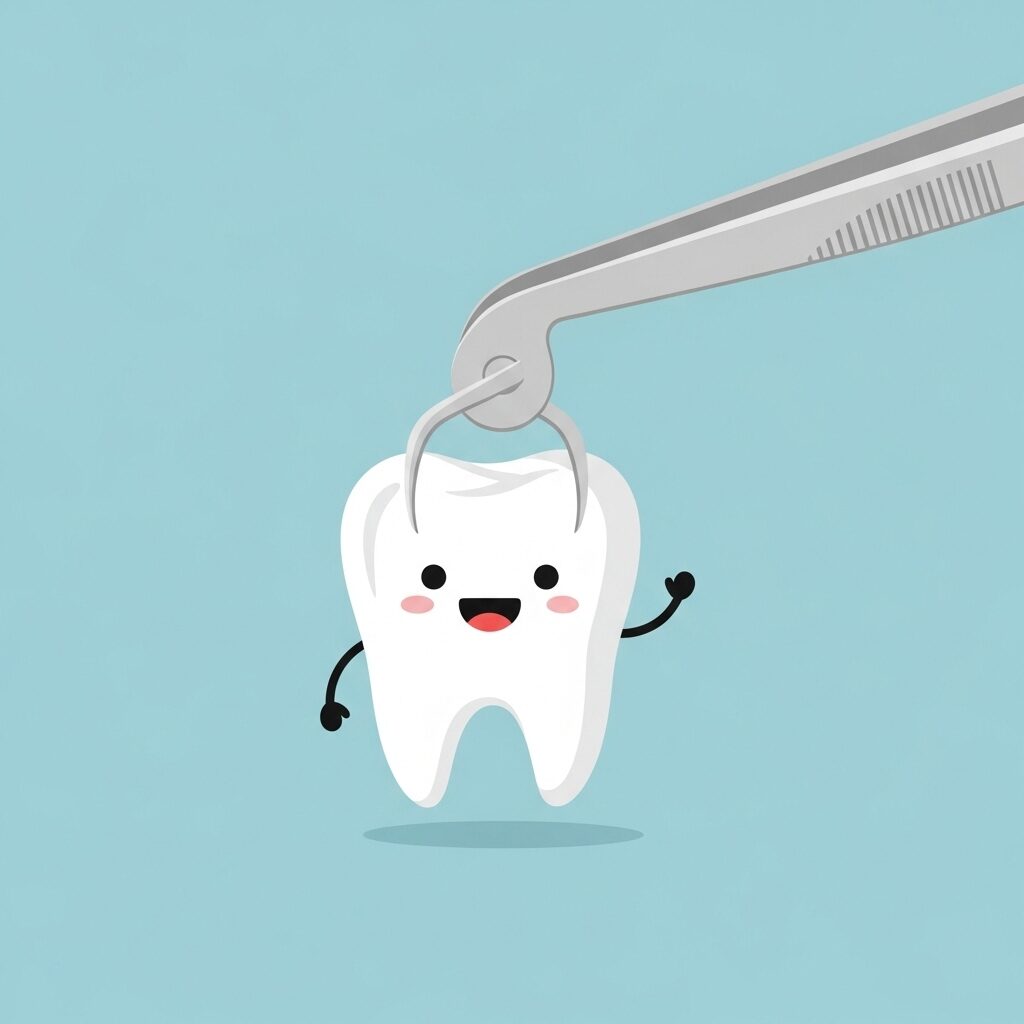
Then the treatment began.
- The anesthesia needle? Almost painless.
- Just a slight spreading sensation, nothing serious.
And the extraction itself…
Yes, I heard a “crack” sound once and my heart jumped.
But that was only the sound of the tooth being shaved and loosened—no pain at all.
👉 The dentist carefully shaved part of my sideways wisdom tooth and removed it in just 5 minutes.
“Huh? That’s it? No pain at all.”
It ended so quickly that I felt silly for worrying so much.
- No stitches
- No major swelling
Relief washed over me.
My Options Going Forward
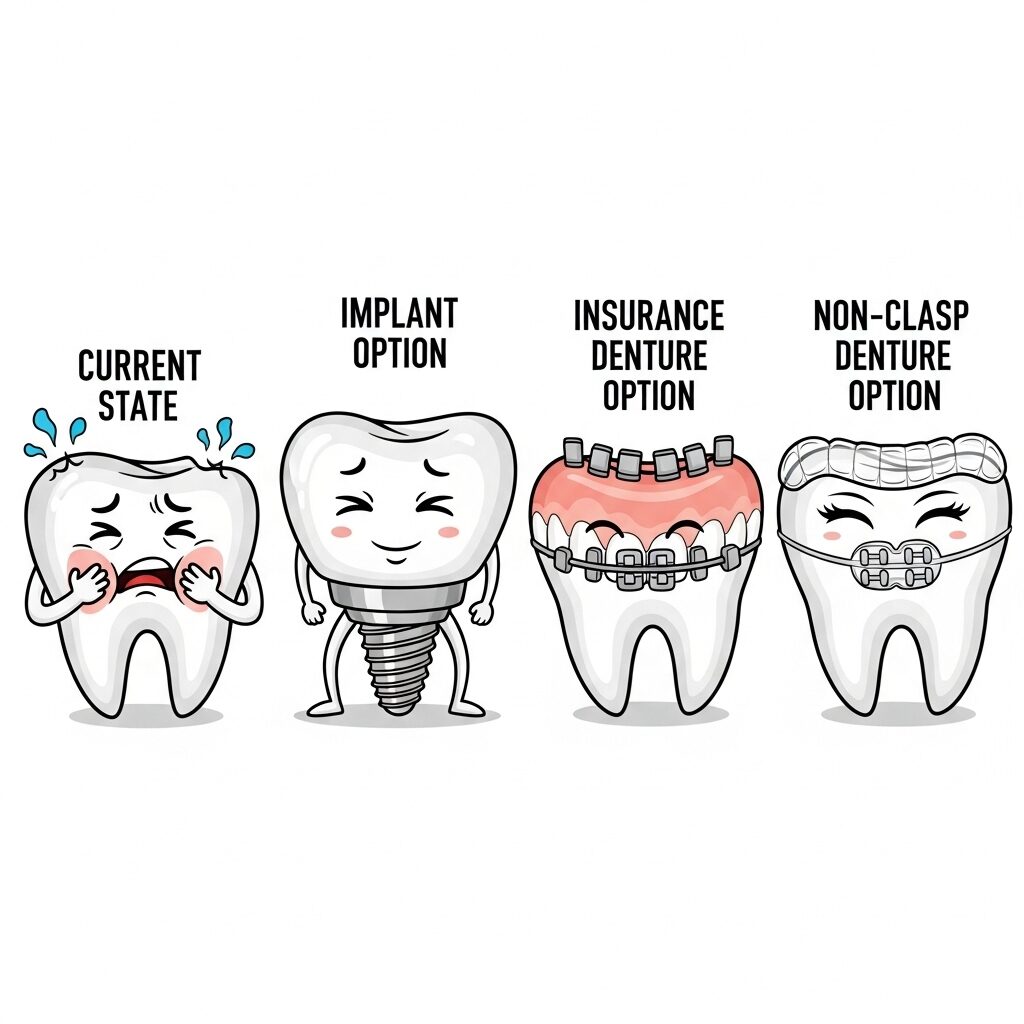
After the extraction, I considered four possible paths:
- Do Nothing (Leave As Is)
- Pros: No cost
- Cons: Must live with pain
- Pros: No cost
- Two Dental Implants
- Pros: Most natural chewing ability
- Cons: Expensive, long-term process (especially with periodontal treatment)
- Cost: $2,000–$4,000 per tooth (≈ 300,000–600,000 yen)
- Pros: Most natural chewing ability
- Insurance-Covered Partial Denture
- Pros: Affordable
- Cons: Metal clasps put stress on neighboring teeth
- Pros: Affordable
- Non-Clasp Denture (Out-of-Pocket)
- Pros: Natural look / Lighter / Comfortable / No stress on weak teeth
- Cons: About $700+ (≈ 100,000 yen) / May need replacement every few years
- Pros: Natural look / Lighter / Comfortable / No stress on weak teeth
Why I Lean Toward Non-Clasp Dentures
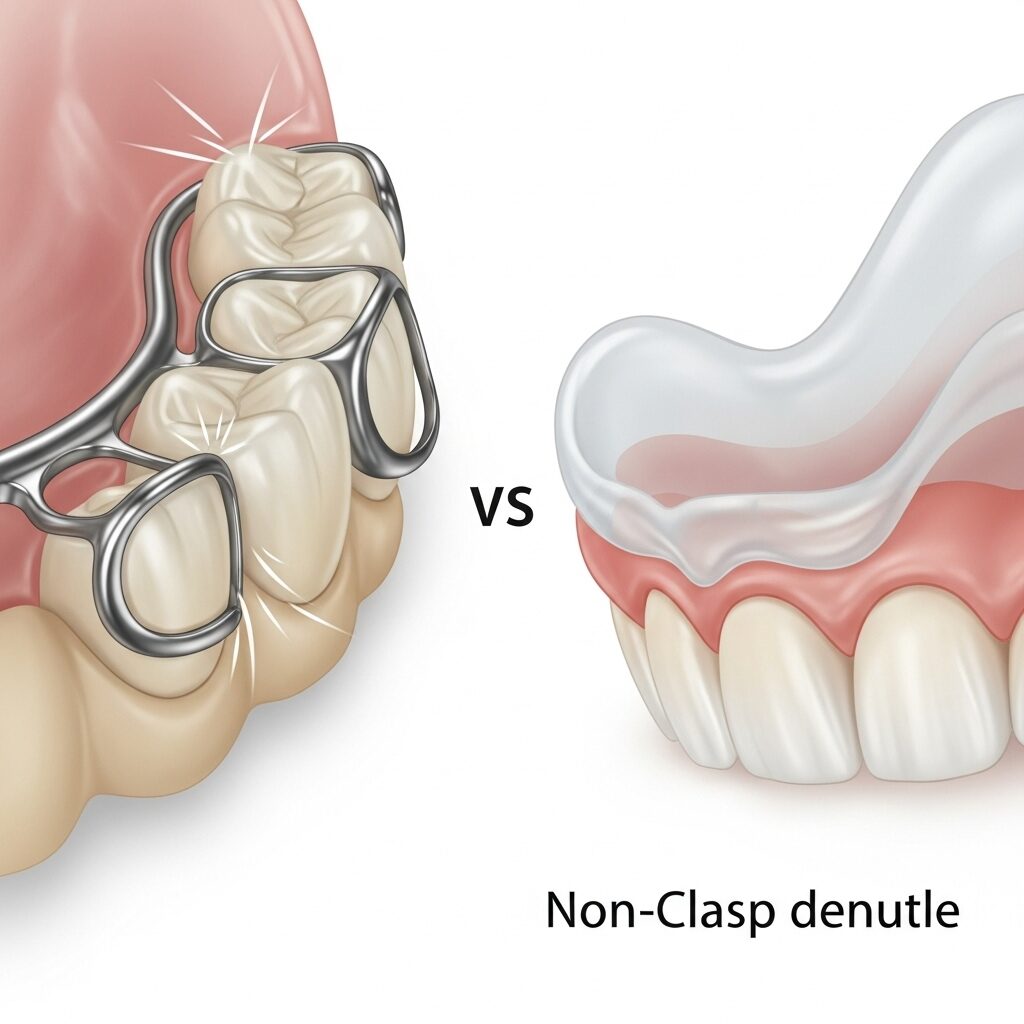
The biggest reason I’m considering a non-clasp denture is simple:
👉 It doesn’t put extra stress on my already weak neighboring tooth.
Traditional dentures use metal clasps, which can damage teeth over time.
With my neighbor tooth already loose from periodontal disease, I didn’t want to risk further harm.
How Non-Clasp Dentures Work (and Are They Reliable?)
- Traditional partial dentures: Metal clasps hook onto healthy teeth
- Non-clasp dentures: Made of flexible resin that fits snugly against gums and surrounding teeth
👉 Think of it as a blend between a soft, clear mouthguard and a denture.
- Nearly invisible when worn
- Made from durable, medical-grade flexible resin
- Comfortable to wear and remove
- Fine for everyday eating, but not ideal for very hard foods
- May need replacement every few years
In short:
If you value natural look & comfort → Non-clasp dentures are for you.
If you value long-term chewing power → Implants are the better choice.
Financial Worries and the Medical Expense Deduction
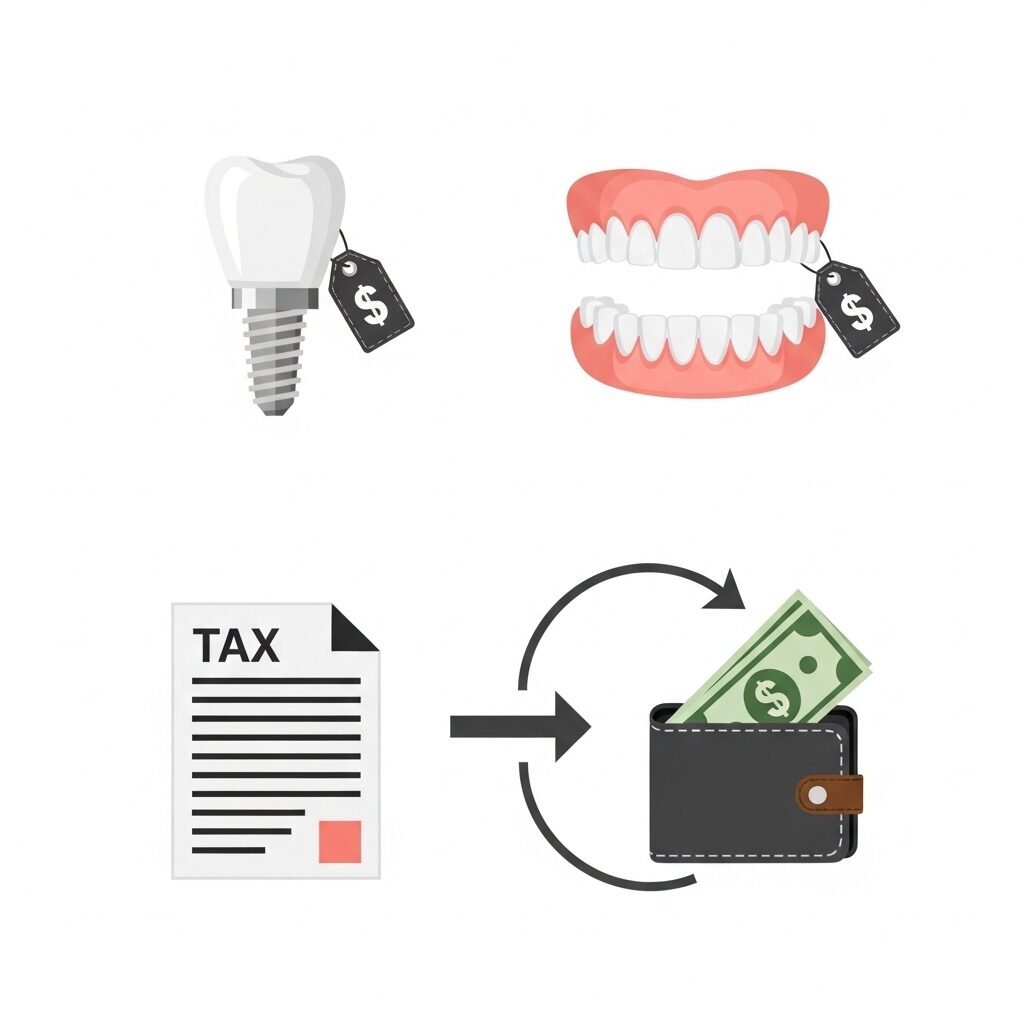
The elephant in the room: money.
Implants and dentures aren’t cheap.
- Dental implants in Japan typically cost $2,000–$4,000 per tooth (300,000–600,000 yen)
- Non-clasp dentures usually start from $700 (100,000 yen)
But here’s the good news:
Both implants and non-clasp dentures can qualify for Japan’s medical expense deduction.
What Is the Medical Expense Deduction?
If your annual medical expenses exceed:
- $700 (100,000 yen), or
- 5% of your annual income (if under $14,000 / 2 million yen)
…you can claim part of it back through your tax return.
Eligible Treatments
- Implants (tests, surgery, materials)
- Out-of-pocket dentures (non-clasp, metal plate, etc.)
- Prosthetics for functional recovery
👉 Cosmetic purposes (like whitening) are not covered.
Tips for Filing
- Keep all receipts and contracts
- Transportation costs to the clinic may be deductible
- Ask your dentist for a certificate if possible
Knowing this system makes the financial burden much lighter.
Life Is Always Full of Events
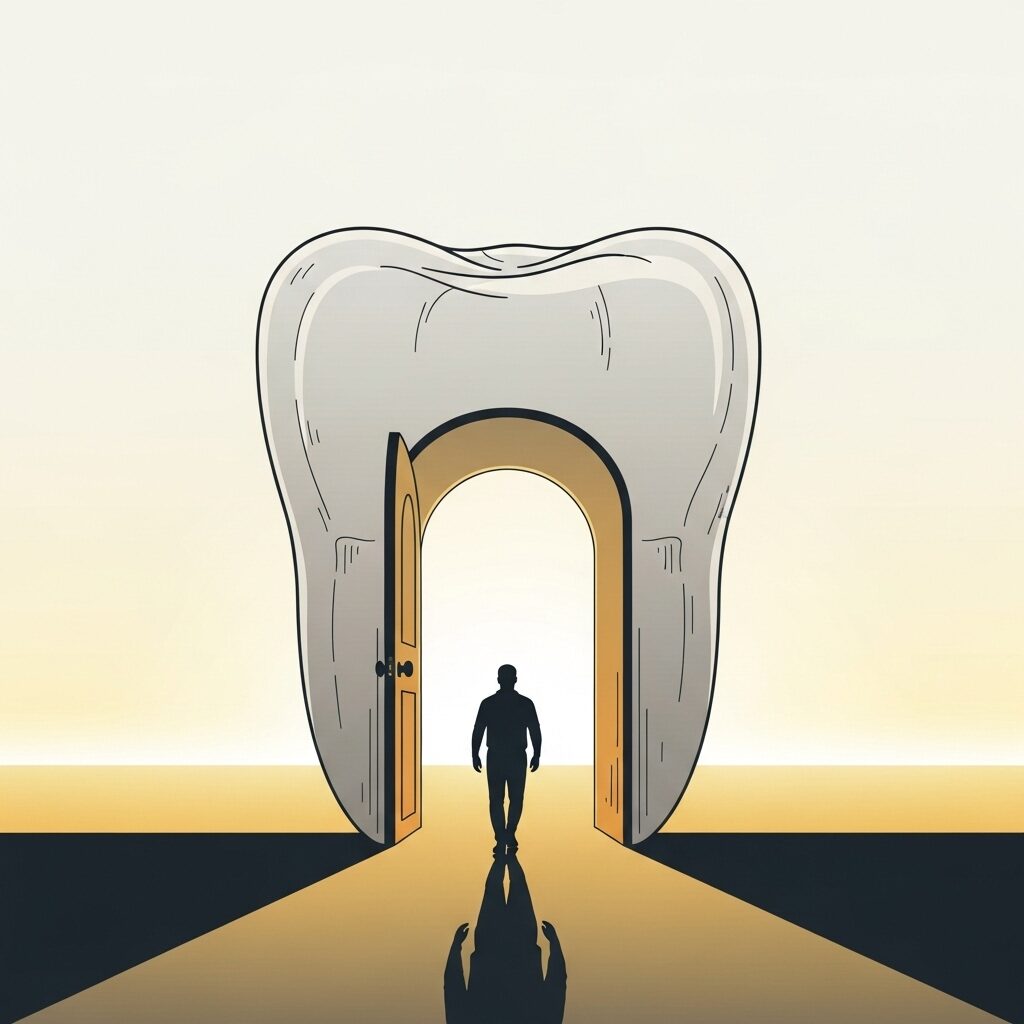
Even in my 50s, I didn’t expect to face an “extraction event.”
But here’s what I learned:
Life is a never-ending cycle of training and learning.
By overcoming the huge fear of my wisdom tooth, I realized:
👉 If I can get through this, I can handle whatever treatment comes next.
Aging doesn’t mean the end—it just means new events and new lessons still await.
Summary & Next Episode
- Wisdom tooth extraction felt like a life event for me.
- But in reality, the pain was minimal and the fear disappeared quickly.
- I gained a new perspective on treatments and financial planning.
👉 If you’re feeling anxious about dental treatment, know this:
Your fears may disappear faster than you think once you take that first step.
Life continues, no matter your age.
So let’s take that step forward—together.
Next time, I’ll share:
- How the recovery process went
- Which path I finally chose: Implants or dentures?
Stay tuned for the “big dental decision” of this old man’s life!
■Related Posts
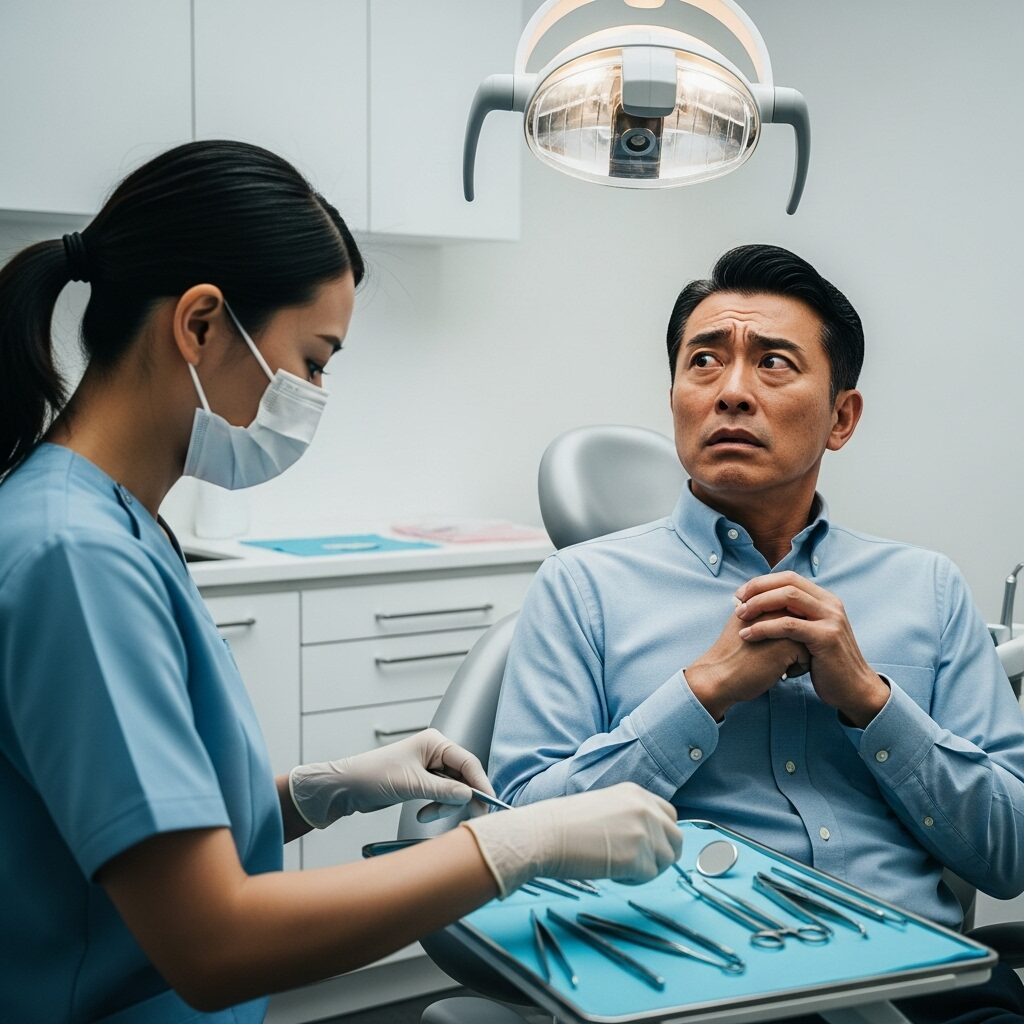


コメント